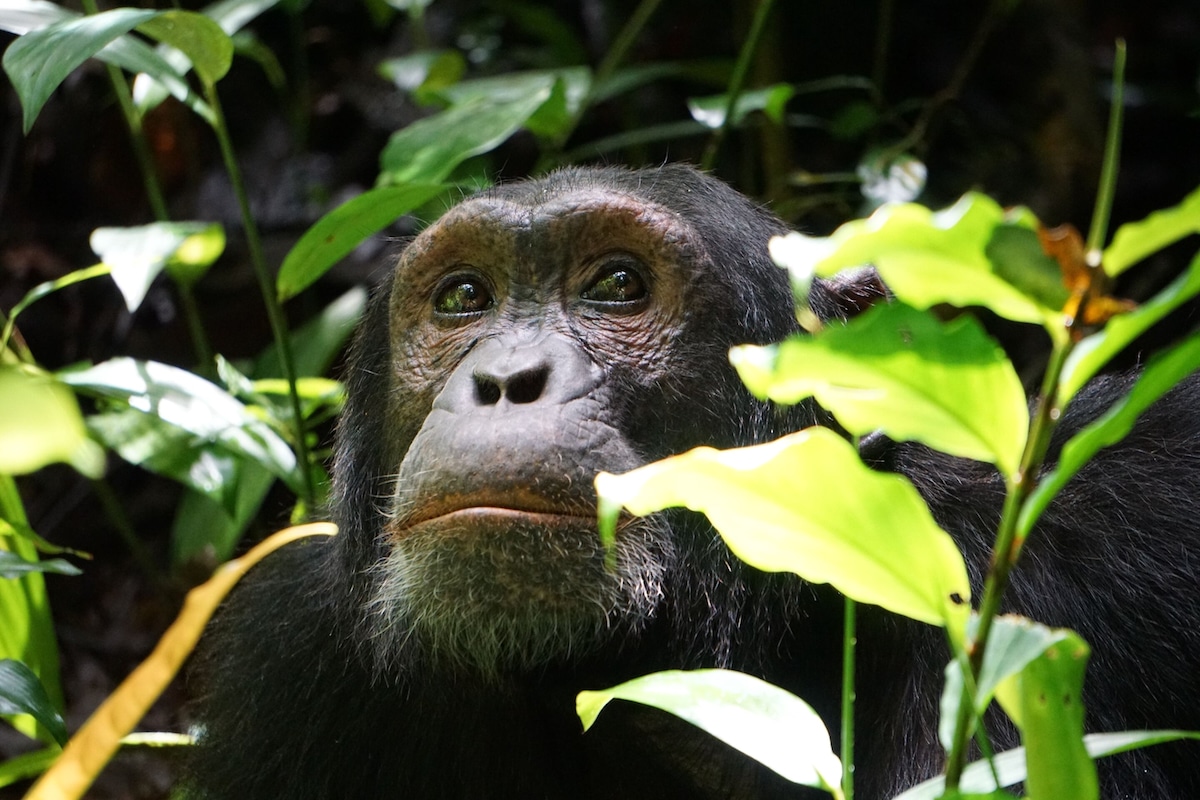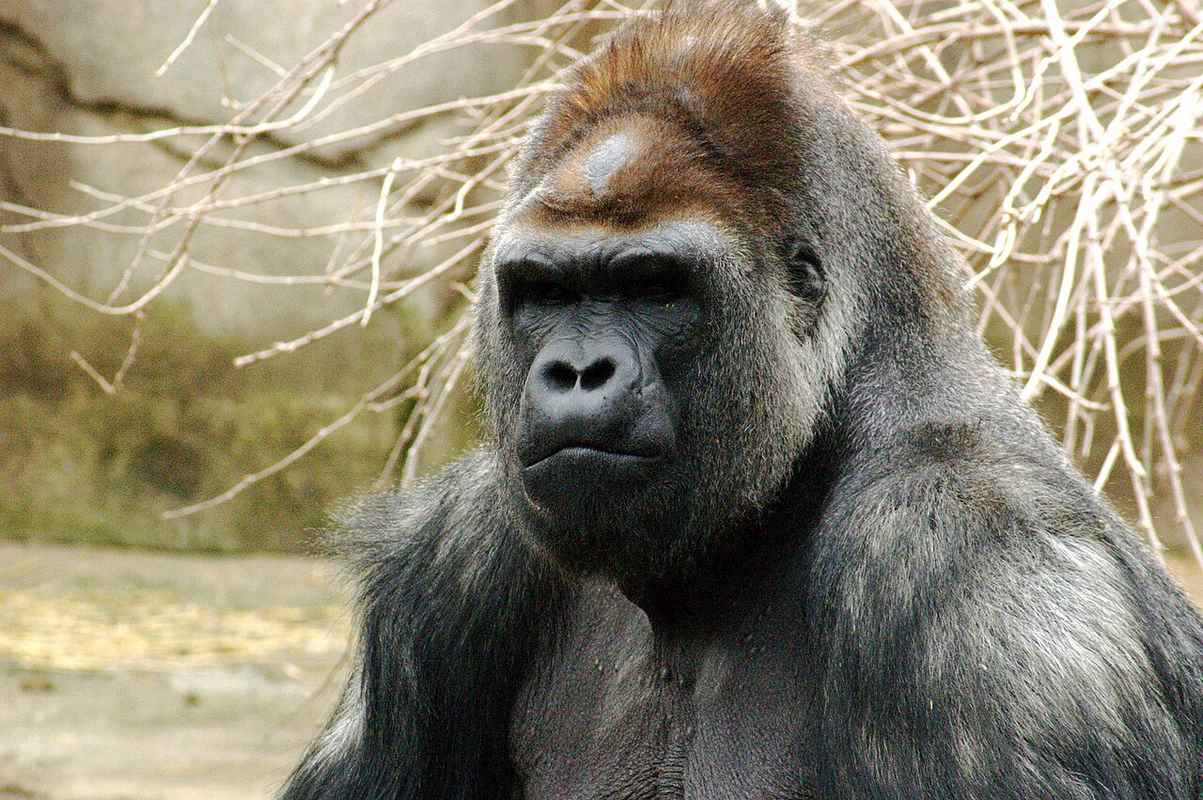African great apes are some of the most iconic creatures on Earth. Humans’ closest living relative, these majestic primates are becoming increasingly impacted by climate change.
In the next three decades, African apes will experience more extreme events such as heat waves, wildfires and flooding, according to a new study led by Razak Kiribou, a Ph.D. student at Haramaya University’s African Center of Excellence for Climate Smart Agriculture and Biodiversity Conservation in Ethiopia.
“Primates play an important role within their ecosystems; they contribute to forest community structure by aiding seed dispersal and plant pollination, ecosystem services that could be threatened by climate change impacts,” the research team wrote in the study. “Most African apes have experienced population decline (except mountain gorillas) and all are either listed as Endangered or Critically endangered by the IUCN Red List of Threatened Species. Climate projections show that across Africa, 61% of primate habitat is likely to be exposed to increases in maximum temperatures of more than 3°C by 2050 and to changes in precipitation patterns.”
In order to better understand the effects of climate change on African great apes, the researchers looked at past and future climate at 363 sites in Africa, estimating the rainfall and temperature at each from 1981 to 2010, a press release from the Public Library of Science said.
“Through literature and some institution reports, we noticed that there is evidence that climate change impacts biodiversity. However large gaps remain in the vulnerable wildlife, particularly in the African Great Ape,” Kiribou told EcoWatch in an email. “The method is based on the climate data and the identification of those extreme events that have already affected Apes that we found in the literature… it has identified six types of extreme events for which there is evidence that they can negatively impact African apes.”
The researchers used two climate change scenarios to project the frequency with which great apes would experience climate change impacts from 2021 to 2050, as well as from 2071 to 2099. They estimated the probability of extreme events like droughts, wildfires and crop failure that could affect apes directly or indirectly.
“Extreme events can affect apes, for example, by reducing food resources and sources of drinking water, or by the destruction of ape habitat,” the authors wrote in the study.
Nearly half the sites examined in the study from 2007 to 2016 had been exposed to temperatures that were higher than average, with eastern chimpanzees (Pan troglodytes schweinfurthii) experiencing the most extreme temperatures.
“This part of Africa has registered the strongest temperature anomalies (up to 0.56˚C) with consecutive dry days and maximum daily temperatures in the past period,” Kiribou told EcoWatch.
Temperatures were predicted to increase at all locations under both climate scenarios, and nearly all sites would see crop failures and frequent wildfires in the near future.
“[C]rop failure in areas surrounding an ape site can lead to increased destruction of ape habitat by humans looking for food in the forest… climate events are ‘the main drivers of internal displacement, with an annual average of 23 million people displaced between 2009 and 2019′,” Kiribou explained. “[C]rop failure considers different types of crops: corn, rice, soybeans, and wheat.”
If global heating were to be limited to two degrees Celsius higher than pre-industrial levels, 78 percent of sites were expected to be exposed to infrequent flooding and 84 percent to frequent heat waves in the next three decades.
In a scenario where global heating rose to three degrees Celsius, the affected number of sites increased.
The study, “Exposure of African ape sites to climate change impacts,” published in PLOS Climate, was the first to demonstrate that great apes have already begun to be affected by climate change, and that more frequent extreme events will likely happen in the near future.
“The ways extreme events affect Apes are their behavior during the event. For example, we noticed that in some of the sites, Apes are drinking more water during hot periods, and others are moving out of their habitat looking for water. This is the case in Senegal with chimpanzees coming to drink water where breeders made a borehole to pump water for their animals,” Kiribou told EcoWatch.
Kiribou pointed out that education and understanding are key aspects of effective conservation strategies.
“[A]t the individual level, there is a need to raise people’s awareness. Introduce biodiversity conservation aspects in schools and associate or involve the local population in the Ape’s site conservation,” Kiribou said.
The researchers emphasized that conservation action plans should strive to bolster the resilience of African great apes to climate change.
“Regarding the type of conservation improvement, we provided climate impact information for each of more than 300 sites to help decision-makers take action. But for better planning, it is good to investigate how sensitive Apes are to extreme events. We just study the exposure, but the sensitivity to the events has to be explored for better conservation,” Kiribou told EcoWatch. “Despite some species being declared endangered by the IUCN, many conservationists did not include climate change impact in their conservation approaches. There is a hope of improving the Ape’s habitat by including climate change impacts effects in the conservation. This can facilitate Ape’s adaptation to the effects of climate change.”
This article by Cristen Hemingway Jaynes was first published by EcoWatch on 5 April 2024. Lead Image: An Eastern chimpanzee. Stefanie Heinicke / CC-BY 4.0.
What you can do
Help to save wildlife by donating as little as $1 – It only takes a minute.







Leave a Reply